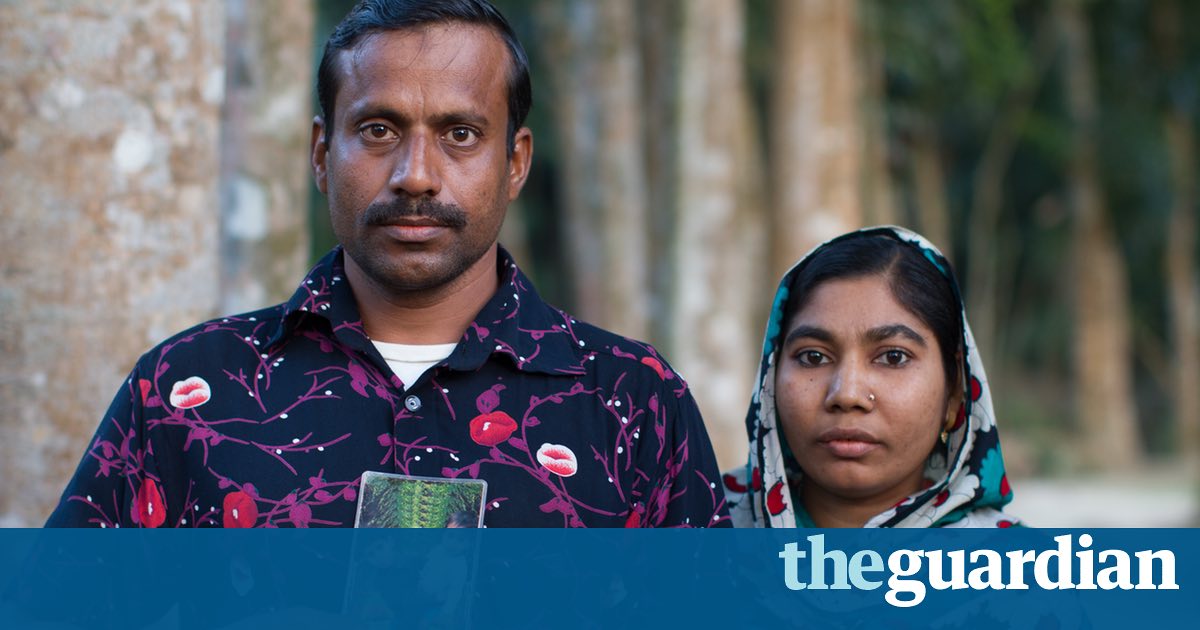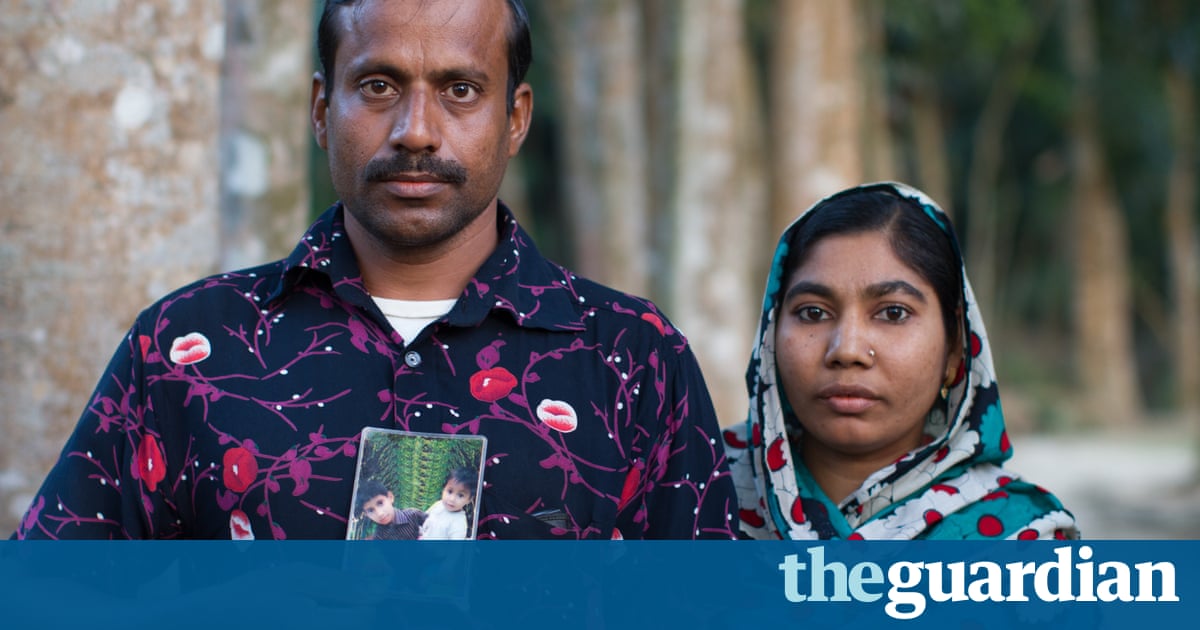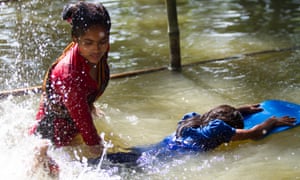Superstition prevents action against children drowning in Bangladesh

18,000 children under the age of 18 drown every year, and action to prevent the deaths is stymied by superstition and a lack of resources

The lives of thousands of children who drown in Bangladesh every year could be saved by encouraging people to put aside superstitions that view the deaths as Gods will, a study has found.
Drownings have become the leading cause of death in children under the age of 18, numbering around 18,000 a year since 2005, yet such deaths are preventable, according to researchers from the Centre for Injury Prevention and Research, Bangladesh.
A 2.5m project, launched in 2016 by the CIPRB, the Royal National Lifeboat Institution (RNLI) and the George Institute for Global Health, in Sydney, is seeking to challenge these traditional ideas and inform the countrys first nationwide drowning-prevention strategy.
The first part of the four-year Bhasa project, which means rise up in Bengali, is a household survey of 400,000 people, aimed at providing a detailed picture of drowning deaths, to identify where the worst problems are and where the most effort is needed. The survey, which is backed by the Ministry of Health and Family Welfare and the Fire and Civil Defence Service, is based in Barisal, an area by the Kirtankhola river in south-central Bangladesh that the CIPRB believes to be the worst place in the world for drownings of children aged between one and four.
In Bangladesh we are investing a lot in vaccinations to prevent measles, in communicable diseases, in preventing pneumonia and diarrhoea. That message has been delivered. But now, we have another mountain to climb, said Dr Kamran ul Baset, the CIPRBs associate director.
In the past two decades, efforts to tackle childhood infectious diseases have yielded dramatic results in Bangladesh under-five and infant mortality declined by 65% and 56% respectively between 2004 and 2014 , according to the Bangladesh Demographic and health Survey published this year.
Yet, despite drowning being flagged as the leading killer of children between the ages of one and 18 as far back as 2005, little has been done nationwide to tackle it. In 2015, the education ministry issued a circular calling for swimming to be taught in all educational institutions, but this is yet to make a dent in the number of deaths, due to a lack of training facilities.
Bangladesh is the most populous delta in Asia, made up of 80% floodplain: water is everywhere, swelling rivers, filling ponds, ditches and deep wells.
Travelling from village to village in Barisal, a division known for rice, canals and large rivers, it is not difficult to see why the CIPRB believes it to be the most vulnerable area of the country for young children. At least one deep pond, sometimes several, sit next to each house, and are used for bathing, fishing and swimming. They are rarely fenced off, although some have screens of netting, fabric or plastic, wound around bamboo sticks to provide privacy for bathers.
Forty-three per cent of drownings in children under five in Bangladesh happen in ponds, and 80% occur within 20m of the home.
Early indications from the Bhasa project have uncovered the biggest hurdle to driving down child deaths in rural parts of the country: a culture that views such deaths as inevitable.
Fazlul Kader Chowdhury, a social anthropologist on the project, said: There is a perception that drowning is a natural phenomenon, or Gods wish, and cant be prevented. Every community has a different superstition. Some talk about a devil pond and they tell me that when children are there, a bright flower appears which tempts them into deeper water. Others believe there is a fairy God, and that she appears at certain times to lure children in.
Traditional remedies used to try to revive victims make the chances of recovery vanishingly small, said Chowdhury. A child pulled from the water will be spun around on their stomachs, in the belief that the pressure will make them vomit out the water. Another ancient remedy involves putting ash or salt in a childs mouth, in the perception that it, too, will cause vomiting.
It was a pond that three years ago took the life of eight-year-old Limon. His parents, rice farmers from Khanpura village, urged him to learn to swim but he was reluctant and fearful. It was harvest time when he died, a busy time for the family. His mother, Shahanas Ackter, 28, had asked him to bathe at the standpipe, but, instead he went to the pond behind the house, one of three deep ponds around their property, to play. When she went to look for him, she found only his slippers on the steps next to the water.
Ackter and her husband, Habibur Rahman, 43, are afraid of losing their second son, Yasin, four, who has nearly drowned three times in his short life. They feel helpless, they said, but are thinking about putting a fence around their house and, when he is old enough, teaching him to swim.
After Limons death, they fastened an amulet around Yasins neck, as is the tradition here, in the hope it would bring him luck and keep him safe. It is very stressful, said Ackter. I try to keep an eye on him, but he is very naughty.

Most of the deaths occur in rural areas between 9am and 2pm, when children are most likely to be unsupervised because parents are busy working and doing chores.
During harrowing interviews with the parents of children who had drowned, the Guardian found that while the risks are recognised, especially to children too young to swim, many parents felt powerless to take action to reduce those risks. Some said there should be more awareness, but others spoke of the loss of their child to drowning as simply Gods will.
Local interviewers for the Bhasa survey, who have spoken to people from 40,000 households so far, have also found that in 97% of drownings in Barisal, no one in the area had cardiopulmonary resuscitation training. Many locals believe that if anyone tries CPR and fails to save the life of a person, they are to blame for the death.
A number of drowning prevention projects, already piloted by the CIPRB, have seen good results. For example, a community creche to supervise young children while their mothers do the household chores has reduced the drowning risk of those participating by 82%. Another project, to teach older children to swim, has reduced the chance of drowning by 90%.
But the CIPRB and the RNLI, which will spend the next few months analysing the data from the Bhasa survey, are keen to develop a strategy based on a bottom-up response to the epidemic. They hope to be in a position to begin implementing prevention measures in June.
Helen Morton, head of International advocacy at the RNLI, said: Theres no one size fits all solution for drowning; this survey will give us both the data and the detail on the how, where and why people are losing their lives to the water and, for the first time, the evidence to introduce the right interventions from community creches and survival swim lessons to ferry regulations and national water safety strategies.